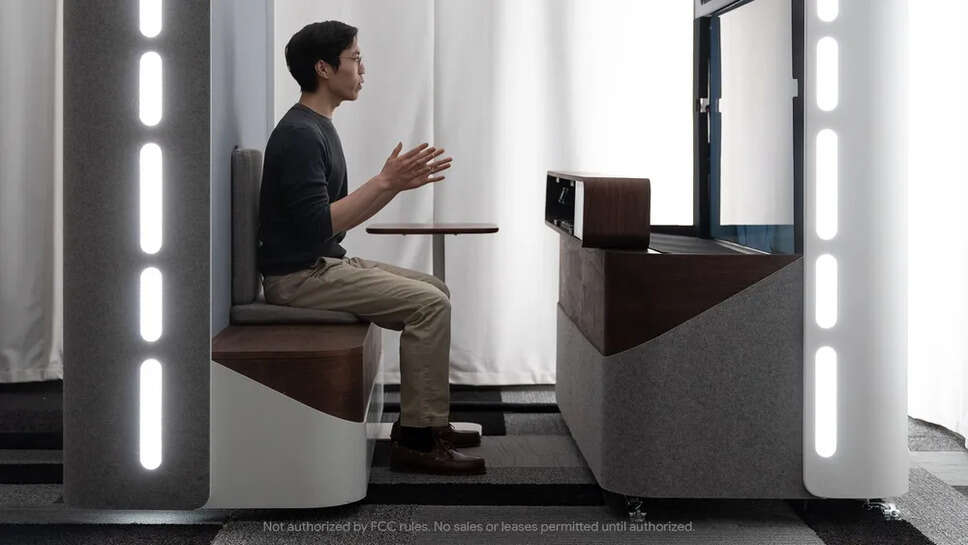Google’s 3D Conferencing Comes to Life with HP—But It Costs $25,000

When Google first teased Project Starline in 2021, the idea felt like science fiction—the kind where remote participants appear as lifelike holograms across the table. Fast-forward to mid‑2025, and that vision is becoming reality thanks to Google Beam, the commercial evolution of Starline. HP’s unveiling of the HP Dimension hardware makes it possible to bring this futuristic experience into offices—assuming you can afford the steep price tag.
1. What Exactly Is the HP Dimension?
-
A 65" light-field display, capable of projecting volumetric 3D images without glasses or headsets.
-
Six high-speed cameras embedded in the bezel capture the user from different angles.
-
Adaptive lighting creates natural shadows and realistic skin tones.
-
Four spatial audio speakers combined with HP’s Poly Studio A2 table microphones deliver lifelike sound that feels like it's emanating from the person on-screen .
The goal? To replicate the nuance of face-to-face interaction—eye contact, subtle shifts in expression, even body positioning—by recreating presence in a single, integrated system.
2. Why This Matters: Breaking the Video Wall
Standard video platforms can feel flat, both visually and experientially. Google's internal testing, along with external trial partners, found that immersive 3D calls can:
-
Reduce meeting fatigue by around 31%
-
Improve memory recall
-
Enhance engagement and eye contact
In one Verge demo, a participant described tossing an apple and feeling as if they could catch it—an uncanny testament to the depth illusion
3. HP’s Strategic Role
Google isn't going solo—it needs hardware partners. HP brings:
-
Expertise in enterprise-grade computing.
-
Integration of audio/video systems via its Poly unit.
-
Global sales and support — all vital for rolling out beyond Google's labs
HP shrank the Starline setup from a room-sized booth to a freestanding 65-inch console, making installation more practical for corporate spaces
4. What You’re Paying: $24,999 for Hardware + Licensing
The HP Dimension hardware sells for $24,999—not pocket change. That cost doesn’t include the required Google Beam license, which must be purchased separately and will enable integration with platforms like Zoom or Google Meet
It’s an enterprise proposition aimed at the top tier: corporations, consultancies, financial services firms, and innovation hubs willing to invest in advanced meeting tools.
5. Limitations to Keep in Mind
-
One-on-one only: Current systems are designed for single-person interactions—not ideal for larger group settings
-
Setup requirements: Best results come from environments with controlled lighting and neutral backgrounds
-
Novelty plateau: Early testers praised the wow factor—but skepticism remains about whether the effect will wear off during routine use
-
Ongoing costs: Beyond the hardware cost, enterprises must account for licensing fees and integration with existing conferencing ecosystems.
6. Who’s Already Onboard?
Early adopters include big names like Salesforce, Deloitte, NEC, and T-Mobile, indicating strong interest among innovation-focused firms
Their feedback has been positive, especially with reduced fatigue and increased presence reported during immersive calls
7. How It Works: Inside the Magic
-
Depth cameras track your facial movements and posture in real-time.
-
AI-driven 3D rendering reconstructs a volumetric image.
-
Light-field display shows different images to each eye, creating a true 3D illusion without glasses
-
Spatial audio ensures voices seem to come from the on-screen person, not just speakers .
It’s a blend of machine learning, computer vision, and high-bandwidth data handling—wrapped in a user-friendly package.
8. Why It’s a Big Deal
-
Courtier-level remote presence: Makes remote collaboration feel more like being in the room together.
-
Reduced fatigue & better engagement: Early studies link 3D interaction with higher attentiveness and recall.
-
Competitive differentiation: For consultancies, agencies, and remote-first companies, it offers a high-tech edge.
-
Signals future mainstream direction: This setup could be a pilot for more widespread light-field and spatial conferencing tech.
9. The Road Ahead
-
Price and accessibility: The key factor will be whether HP and Google can bring prices down and scale production.
-
Software rollout: Licenses and integration with existing platforms will determine adoption speed.
-
Evolving use cases: Initial deployment will be narrow, but future iterations may support multi-person, hybrid sessions, or fully remote collaboration hubs.
Google Beam via HP Dimension is less a mass-market product and more a flagship demonstration of where digital collaboration might head. At $25,000, it’s positioned for enterprise trial and high-value use, not cubicles or homes. But early adopters say the experience delivers on its promise: deeper presence, less fatigue, and a more human feel than conventional video.
